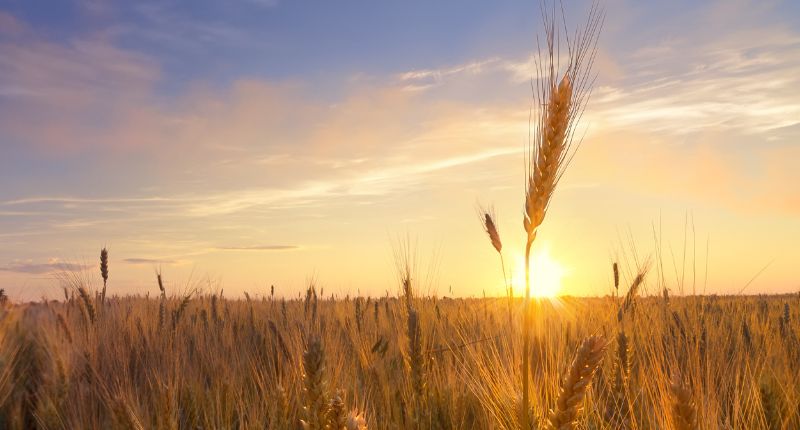
- Record year of growth for Australian farming in 2022.
- Wheat, canola, and cotton lint the top agricultural products.
- Current geopolitical events and poor weather conditions to impact industry's future.
Farms are set to weather headwinds, following a stellar performance in 2022, according to Ray White chief economist, Nerida Conisbee.
Last year saw both farmland and farming record excellent levels of growth. Farmland values nearly doubled over the past three years, and many crops enjoyed excellent conditions.
Good fortune in 2022 sets Australia’s farmers ahead of the pack
Last year was exceptional for farmers nationwide, partly due to favourable weather and setbacks in other parts of the world. Thus, Australia’s farms produced more than those of other nations.
Total agricultural production has surpassed $90 billion, and land values have nearly doubled over the past three years. However, the future remains to be determined.
The value of farmland has almost doubled over the past three years

Australia’s top agricultural goods are wheat and beef, which comprises one-third of all production by value in the previous year. Wool no longer sits in the top 10 commodities by value, previously a significant agricultural product in Australia. On the other hand, nursery cut flowers and turf thrived last year, becoming a higher-value commodity worth $3.4 billion of production, outpacing the $3.2 billion of wool.
Beef and wheat account for around a third of all agricultural production in Australia

Wheat was 2022’s star in terms of growth. The total value of wheat production swelled by $3.3 billion in 2022, hitting a new record of $13.1 billion. Canola and cotton lint production skyrocketed as well, increasing by over two-fold. The wheat industry’s impressive performance had spillover effects on farming communities and farm values, with house prices experiencing record increases in wheat farming areas.
The value of wheat production increased the most in 2022 of all commodity items

2023-24 fraught with uncertainty for the Australian farming industry
Though 2022 was remarkable for farming, this trend is expected to be short-lived. The Australian Bureau of Agriculture, Fisheries and Forestry (ABARE) has predicted that the value of agricultural production will drop by 14% in 2023-24, with dryer conditions being the primary factor. Meanwhile, production overseas is expected to recover.
Pre-existing geopolitical issues may also sway the agricultural industry in either direction. For instance, while the weather conditions are expected to take a turn for the worse in Australia and harm wheat production, wheat prices are also predicted to grow.
Recently, Putin tore up the Ukrainian wheat deal, which guarantees the uninhibited flow of wheat from Ukraine. Additionally, an ensuing drone strike destroyed a wheat storage silo in a Ukrainian port city, resulting in global wheat prices catapulting to their highest level since February.
Furthermore, the price of rice is also slated to soar, as the Indian government has just banned exports of non-basmati rice to address local shortages. India is the world’s largest rice exporter, responsible for one-quarter of the world’s rice production.
The ban is anticipated to create the most significant global rice shortage in two decades, which will cause prices to ascend. Though rice is not a substantial export of Australia, the deficit is expected to affect Riverina in southern NSW, Australia’s central rice-growing region.
Unlike wheat and rice, beef prices are not expected to rise. Even though beef is the nation’s highest-value commodity, cattle prices have halved since February 2022. Meat and Livestock Australia expects prices to drop slightly throughout the year. On the flip side, the national herd is still growing and will reach its highest level in a decade.
Win for farmers, not so much for everyday Australians
While the weekly economic update is welcome news for industry, it may spell further pain for everyday Australians struggling through an ongoing cost-of-livings crisis, record levels of inflation, and a housing crisis.
“Rising wheat and rice prices are great news for farmers. It is, however, bad news for consumers – rising prices for these commodities will impact household budgets. This will also flow through to inflation and ultimately interest rates,” Conisbee told The Property Tribune.
The Property Tribune also reached out to John Gunthorpe, agribusiness director at Herron Todd White.
“There has been a general shift in the market for large scale cropping and irrigation farms in southern Australia from the peak of 2022 with large farming families who had dominated the market over the past two to three years on the back of cheap debt and strong farm gate returns now entering a period of consolidation due to increased debt servicing costs and uncertainty about climatic conditions looking forward,” Gunthorpe said.
“At the same time corporate and institutional investors appear to be re-entering the market, especially for large scale assets greater than $20 million with agents reporting smaller scale ‘add on’ parcels now meeting some resistance unless a neighbour is in a position to purchase.
“With the southern expansion of cotton and permanent tree crops to southern NSW many rice growers are now weighing up on a yearly basis the cost benefit of growing rice or trading temporary allocations to cotton growers. With temporary water currently trading at around $120/ML and prices strong, it’s likely growers will opt for larger rice plantings in 2024.
Wheat farmers in northern Vic & southern NSW have had a favourable start to the growing season and provided frost does not impact final yields they should experience another profitable year. However, it has been well documented that in the north of NSW the wheat harvest will be significantly reduced due prolonged dry conditions over the winter period.”







